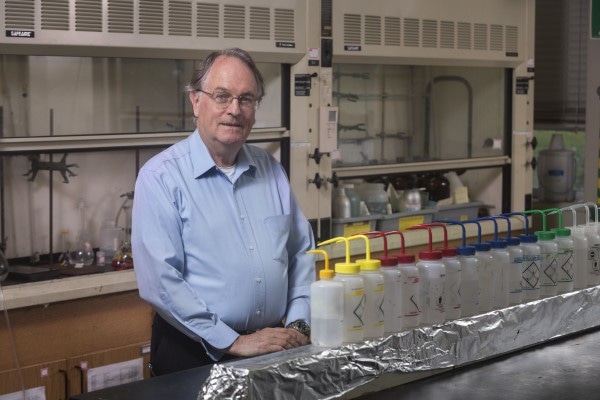Aug 10 2016
 M. Stanley Whittingham, distinguished professor of chemistry at Binghamton University, will lead his Energy Storage team as part of the Battery500 consortium.(Credit: Jonathan Cohen/Binghamton University)
M. Stanley Whittingham, distinguished professor of chemistry at Binghamton University, will lead his Energy Storage team as part of the Battery500 consortium.(Credit: Jonathan Cohen/Binghamton University)
A new consortium, which includes Binghamton University will help to bring more efficient and powerful electric cars to the roads sooner than expected.
According to a recent announcement made by the White House, a multidisciplinary "Battery500 Consortium" that is headed by U.S. Department of Energy’s (DOE) Pacific Northwest National Laboratory (PNNL) has been formed, and aims to make vehicle battery technologies cheaper. A fund of up to $10 million per year for five years will be awarded to the Battery500 Consortium to support DOE’s motive of decreasing the cost of vehicle battery technologies.
The main goal of the team is to produce three times the specific energy compared to the current battery technology, and also to achieve 1,000 electric vehicles cycles. As a result, a considerably lighter weight, smaller, less expensive battery pack costing about $100/kWh or less, and highly economical electric vehicles can be obtained.
M. Stanley Whittingham who is a renowned professor of chemistry at Binghamton University, will head his Energy Storage team.
We hope to extract as much energy as possible while, at the same time, producing a battery that is smaller and cheaper to produce. This consortium includes some of the brightest minds in the field, and I look forward to working with them to create lithium batteries that will power future electric vehicles more affordably.
M. Stanley Whittingham, Professor of Chemistry, Binghamton University
The scientists will pair lithium metal as the negative electrode with two varied materials for the positive electrode of the battery in order to design cell architectures and new electrode. This re-designed battery will help prevent unwanted side reactions and will lead to a significant improvement in the battery performance.
The Battery500 Consortium also includes PNNL, Brookhaven National Laboratory, Idaho National Laboratory, SLAC National Accelerator Laboratory, Stanford University, University of California, San Diego, University of Texas at Austin, University of Washington, IBM (advisory board member), and Tesla Motors, Inc. (advisory board member).
Ideas from others are welcomed because the consortium believes that diversity in experience and opinions most of time provide better solutions. The team has decided to allocate 20% of its total budget for "seedling projects”, or work depending on proposals from the entire battery research community.